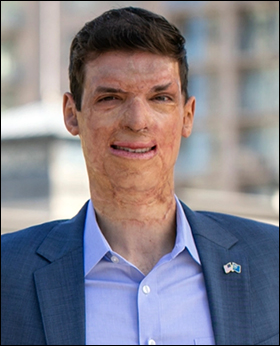By Jim Ellis — Friday, April 26, 2024
President
Bloomberg Swing State Polls: Trump Leading in All But One — Bloomberg News, in partnership with the Morning Consult data organization, conducted presidential polls in all seven of the key swing states during the April 8-13 period. The cumulative data produced very good news for former President Donald Trump, as he is projected to lead in six of the seven states in both head-to-head pairings with President Joe Biden and when the independent and minor candidates are added to the polling questionnaire.
In the one-on-one polling series, Trump leads Biden in a range from one (Pennsylvania) to 10 (North Carolina) percentage points. Only in Michigan does President Biden have an advantage (+2). When Robert F. Kennedy Jr. (I) and the minor party candidates are added, which is the more realistic ballot test, Trump’s advantage either holds or grows. Under this scenario, his advantage stretches from one (Pennsylvania) to a whopping 14 percentage points (Nevada). Again, under this configuration, President Biden would lead only in Michigan (+3).
This polling series represents Trump’s strongest cumulative swing state showing of 2024. The polled states are Arizona, Georgia, Michigan, Nevada, North Carolina, Pennsylvania, and Wisconsin.
Senate
Utah: GOP Nominating Convention Tomorrow — Utah Republican delegates convene tomorrow at the Salt Palace Convention Center in Salt Lake City to consider a large ticket of primary endorsements, the most important of which are for the open US Senate seat and governor.
In Utah, candidates can qualify for the ballot in one of two ways. The first is to obtain 40 percent of the delegate vote at the state convention. Doing so guarantees a primary ballot line for no more than two candidates. The second way is to petition onto the ballot, which means collecting 28,000 valid registered party members’ signatures for a statewide candidacy. For a US House race, the required signature number is 7,000 within the particular district.
Rep. John Curtis (R-Provo), former state House Speaker Brad Wilson, and businessman and podcast host Jason Walton have already qualified for the US Senate Republican primary ballot via petition signatures. Therefore, regardless of whether these men receive the 40 percent delegate support necessary to advance to the primary in tomorrow’s convention, they have each secured a ballot line. Attorney Brett Orrin Hatch, son of the late Sen. Orrin Hatch (R), submitted petitions but is approximately 7,000 signatures short of qualifying. Thus, he can access the ballot only through the delegate process tomorrow.
In the governor’s race, the only candidate qualifying through petition is incumbent Gov. Spencer Cox. For the US House, 1st District Rep. Blake Moore (R-Salt Lake City) is the only incumbent to qualify through petition signatures. The state’s other incumbents, Reps. Celeste Maloy (R-Cedar City) and Burgess Owens (R-Salt Lake City), will qualify through the delegate process. No opponent to either Reps. Maloy or Owens has submitted petition signatures.
House
KS-2: Majority Leader Won’t Run for House — Despite indicating interest in running for Congress when Rep. Jake LaTurner (R-Topeka) announced his retirement last week, Kansas state House Majority Leader Chris Croft (R-Overland Park) yesterday issued a statement saying he will not run.
Croft’s decision is principally due to the fact that his home Overland Park area is fully contained in the 3rd District, thus giving him very little in the way of a political base in District 2. A crowded Republican field is expected to form before the June 1 candidate filing deadline. With a FiveThirtyEight data organization rating of R+21, the Republican primary winner will become the definitive favorite in the general election.







